“Pushing 60, Trying to Look 30,” Nicole Kidman’s New Bold Style Is Deemed Age-Inappropriate
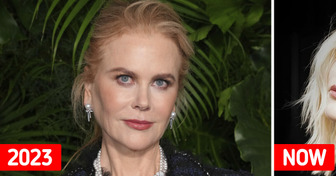
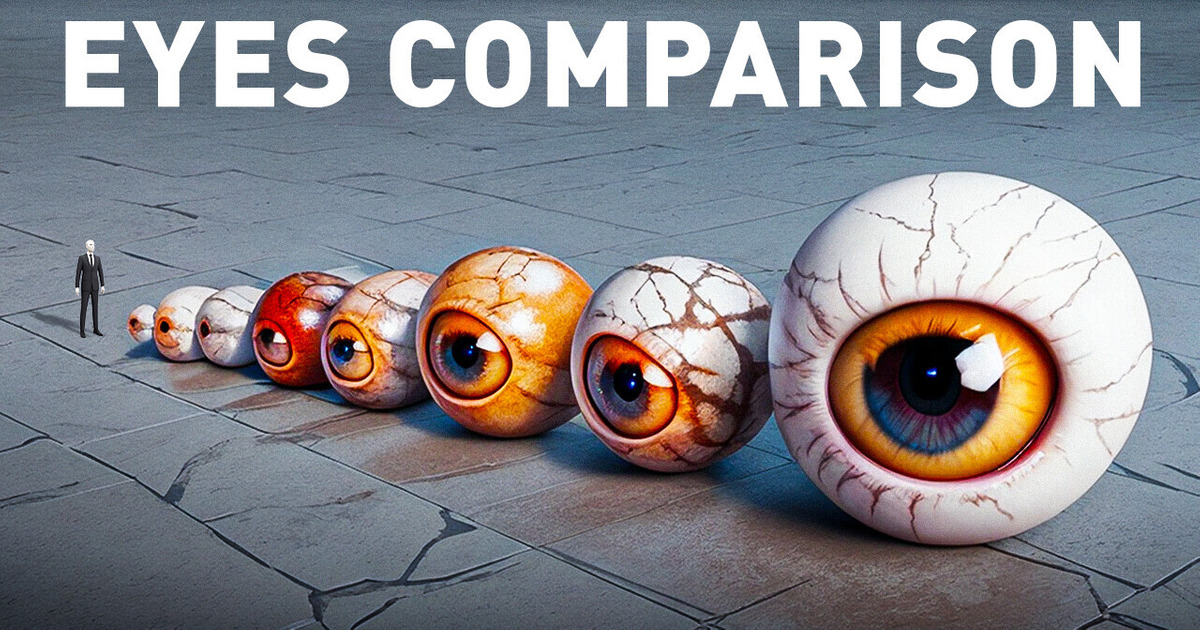
The largest eyes in the animal kingdom belong to the colossal squid. This creature most likely has the biggest pair of eyes that has ever existed on our planet. They measure an astonishing 11 inches across, which makes them the size of a basketball.
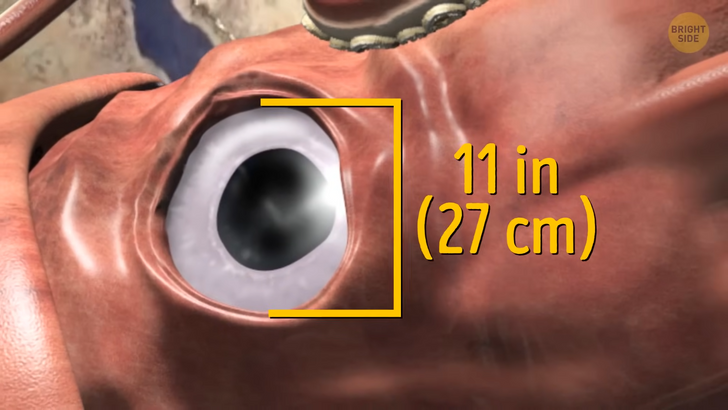
The colossal squid needs such eyes not only to see its prey better but also to protect itself from underwater predators. Its eyes face forward, giving the squid binocular vision. Another type of squid, called the giant squid, has its eyes placed on each side of its head. This allows the animal to see predators, too. But since it lacks that binocular vision, it’s not very good at estimating distances. The colossal squid, like many other squid species, has a fascinating feature called light organs — one in each eyeball. Those light organs are made of vertical lines located in the back of their eyeballs. These organs are similar to the headlights of a car.
But even though the colossal squid has this really cool feature, it most likely doesn’t have color vision. Most deep-sea animals don’t, either. But it’s not like they need it that much in the depths of the ocean, where it gets really dark. Humans, for example, have eyes that can only detect light at a depth of about 1,600-2,000 feet. Since colossal squid are found at more than 3,200 feet below the surface, they needed to adapt to be able to see in almost pitch-black darkness. That’s why they also have very large pupils, about 3 inches across. It helps them collect every single particle of light in those harsh environments.
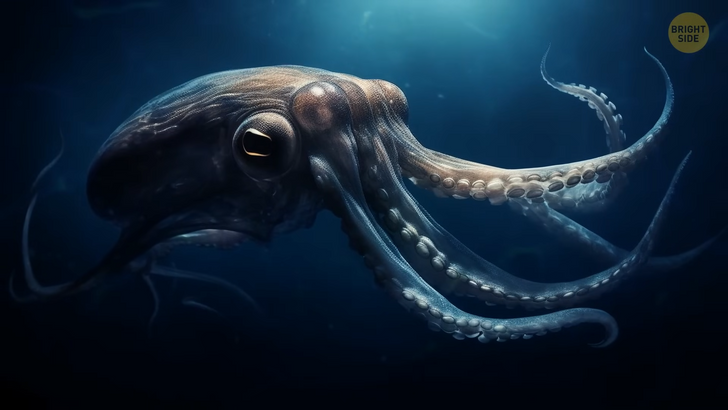
Big eyes don’t necessarily mean big bodies; just ask tarsiers. They’re a group of primates that have the biggest eye-to-body size ratio. Each of their eyes is just as big as their brain. You can find these Gollum-looking animals in Southeast Asia. Because they have such big eyes, these small animals aren’t able to rotate them fully, so they have to rely on their necks to get a better field of vision. Similar to owls, their necks can rotate about 180 degrees on each side. Tarsiers are nocturnal animals and use these quirky-looking eyes to look for prey. They don’t put much effort apart from that — they just wait for the prey to approach them instead, sitting patiently in the dark.
Speaking of small but effective eyes, some types of dragonfly eyes come equipped with about 28,000 lenses — that’s more than in any other living animal. And since their peepers cover almost their entire head, they have a perfect 360-degree vision. But can an animal survive without eyelids? Most living beings have evolved to have eyelids to help protect their eyes from debris. Eyelids also help us in super-bright environments or when we are exposed to high heat. Last but certainly not least, eyelids help keep eyes lubricated so that they don’t dry out and lose their functions.
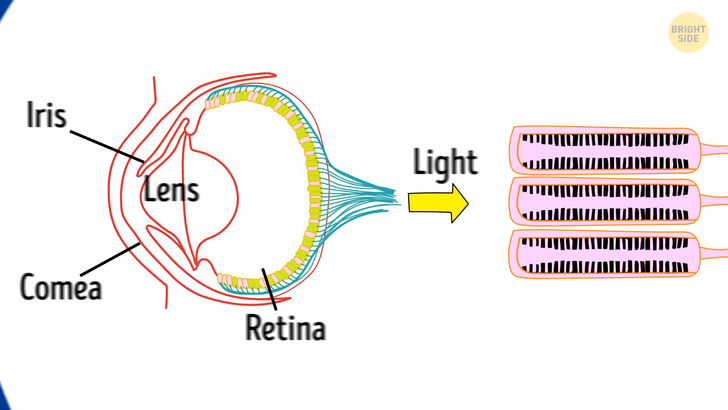
Well, check out nocturnal geckos; they don’t have eyelids, but they came up with another unique method. They have to rely on their tongues to keep their eyes lubricated and clean. They also see really well in dim light because, in the nighttime, their vision is 350 times more sensitive to color than ours. I mean, I’d certainly love to have eyes that change color every now and then, but unfortunately for me, I wasn’t born an Arctic reindeer. Their eyes can switch colors depending on the season. In the summer, for example, their eyes turn gold, whilst during the colder months, they have blue eyes. These animals have adapted to have this color flexibility because of the ever-changing light levels in their harsh habitat.
Ever heard of a fish with four eyes? Its official name is Anableps, and it has a special ability to see both above and below the water line — simultaneously! How come? Because its eyes are split in half by a horizontal line. Each of those half-eyes comes with its own pupil and retina, which means they can act separately. This unique disposition of its eyes allows the fish to see both predators in the sky and spot insects on land — those make up for most of its menu.
Ostriches have eyes that are bigger than their brains! They also have the largest eyes out of all terrestrial animals since they measure about 2 inches across. But if you look closely, you’ll also see that ostriches have eyes with long, dense “lashes.” They’re not really lashes, though, since they’re not made of hair. Those long strands are actually more related to feathers and help these huge birds with some added shade and protection against flying sand. Some of the best eyes out there are those of chameleons. They have the ability to move independently, which gives these reptiles almost 360-degree vision. The reptile can also use both monocular vision — that’s when both eyes function separately — and binocular vision — when both eyes focus on the same thing.
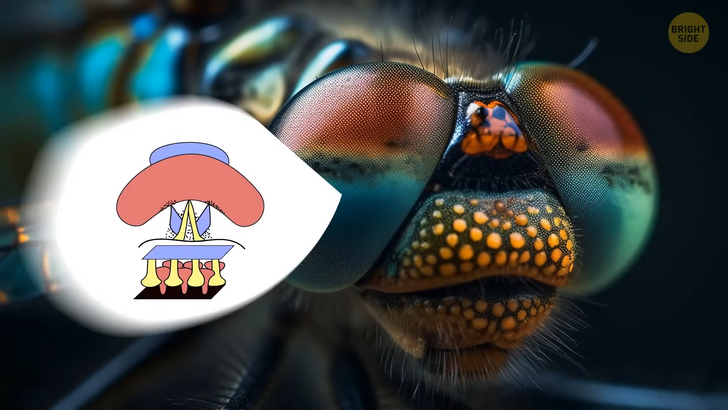
California’s purple sea urchin is basically one single functioning eye! That’s because the whole surface of its body is filled with photoreceptors. That makes the sea urchin sensitive to light, which means it can see in every direction. It does need to focus the light for better vision once in a while. The creature uses its spines to stop some of the light from hitting its body.
Some eyes in the animal kingdom needed to adapt to really hot climates. Like those of camels, for example. These animals have really long lashes that help them keep away the sand. A camel’s eye also features a third eyelid. But this one sweeps across from the corner of each eye. Because their environment is filled with small particles of dust, they need to clean their eyes more frequently than other species.
Owls have eyes that share one great feature with those of humans. They can see in 3D — much like any other predators. Owls need this to better calculate the distance toward their prey. But here comes the problem: how do those gigantic eyes fit into the small skull of an owl? Turns out that these birds had to “redesign” their eye shape. An owl’s eye is not a sphere; it’s more elongated. The bones in the bird’s skull have a special structure called a sclerotic ring. It helps support these huge eyes and hold them in place. But because of these rings, owls can’t rotate their eyes, which are always looking straight ahead. Instead, they have to rely on their necks to see around.
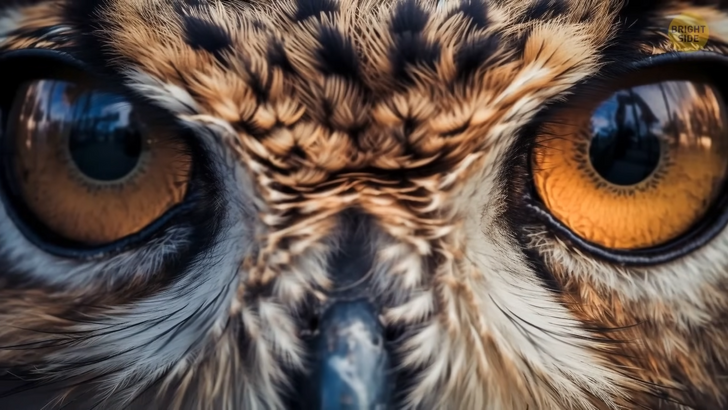
The mantis shrimp has probably the most complex eyes in the entire animal kingdom. Us humans have only three types of cones in our eyes — this gives us the ability to see the colors red through violet. The mantis shrimp has 16 types of cones! They might not see different colors from those we do, but they do have one of the best color recognition systems out there. These extreme color receptors allow them to react to every small change in hue really fast, avoiding predators.
When you think about animals with really unique peepers, sheep and goats aren’t the first on your list, right? Don’t dismiss them so quickly, though, as a goat’s pupils are shaped like horizontal lines — and that comes with its own purpose. Data provided by researchers points out that pupil shape and eye orientation are related to the daily activities of each type of animal. Take bigger daytime predators, like wolves, for example: most of them have forward-facing eyes and round pupils.
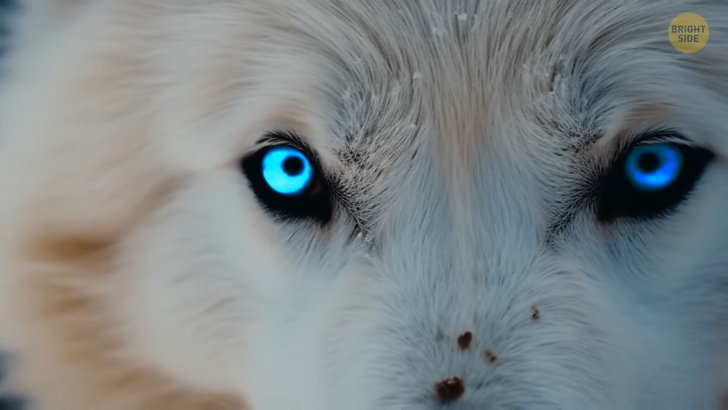
On the other hand, smaller animals, like snakes, cats, or foxes that go to look for food both during the day and at night, come with vertical slit pupils, better adapted for night vision. More vulnerable animals, like horses and deer, need to be constantly on their toes.
So they’ve adapted to have wide and narrow horizontal pupils. This allows them to stretch their field of vision, which is wider than that of any other animal. Also, when they keep their head low, their eyes rotate, and they keep a watch on their surroundings.











